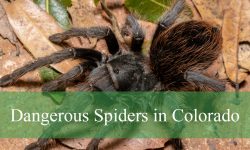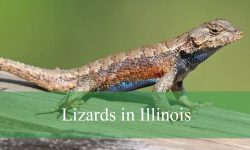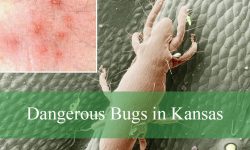Tennessee’s woodlands, gardens, and parks host a remarkable diversity of caterpillars, many of which display vivid colors and intricate patterns. Among them are a few species capable of delivering painful stings through venomous spines hidden beneath their soft-looking hairs.
These caterpillars are often seen resting on leaves or crawling along branches of common trees and shrubs. Their harmless appearance can be misleading, as contact with their spines may cause intense burning, swelling, or rash that can last for hours.
Learning to recognize these toxic species is the best way to stay safe outdoors. This guide highlights the most dangerous caterpillars found across Tennessee, describing their features, behavior, host plants, and the effects of their venom to help you identify and avoid them.
Types of Dangerous Caterpillars in Tennessee
Puss Caterpillar (Megalopyge opercularis)
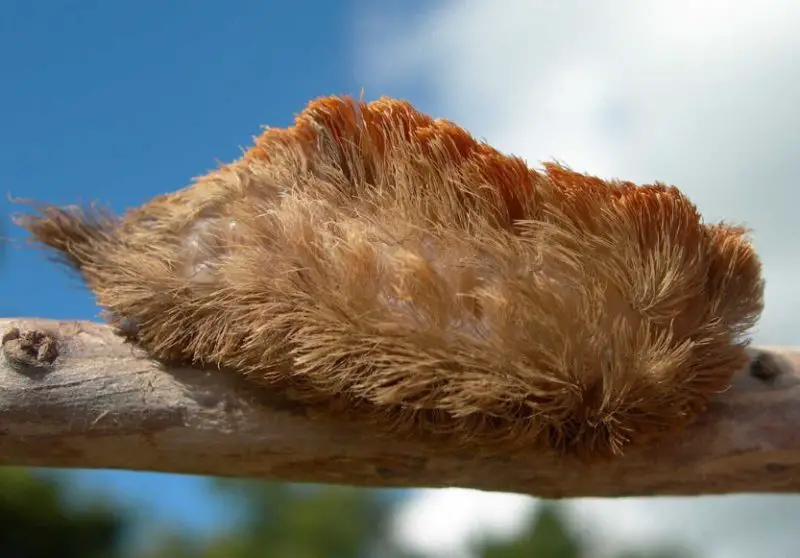
The Puss Caterpillar, also called the Southern Flannel Moth caterpillar, is one of the most venomous caterpillars in North America and is found throughout Tennessee’s woodlands and suburban landscapes. At first glance, it appears harmless, resembling a tiny ball of fur or cotton. Its thick coat of gray, tan, or orange “fur” conceals venomous spines capable of delivering an excruciating sting. Adults emerge as small, fuzzy moths with golden or tan wings and a soft appearance that belies the caterpillar’s painful defenses.
In terms of identification, the Puss Caterpillar measures about 1 to 1.5 inches in length when mature. It has a rounded body completely covered in dense hairs that may vary in color from light gray to orange-brown. The most distinctive feature is its plush, almost mammal-like texture, which makes it look like a petable insect — a deceptive trait that often leads to accidental stings. Beneath those silky hairs lie rows of hollow, venomous spines connected to poison glands.
When touched, the spines of the Puss Caterpillar pierce the skin and release venom that causes immediate, intense pain — often described as “burning like fire” or “electric shock.” The pain can radiate through the affected limb, lasting from several hours to more than a day. Other symptoms may include swelling, nausea, headaches, and in rare cases, difficulty breathing or shock. The venom’s exact composition is not fully understood, but it contains neurotoxic and hemolytic components that attack both the nervous system and blood cells.
This species feeds on a wide variety of trees and shrubs including oak, elm, sycamore, citrus, and rose bushes. It tends to rest on the underside of leaves during the day, where it can remain hidden from predators. Gardens, orchards, and forest edges are common habitats, especially in warm, humid environments.
The adult moths emerge in late summer, and the caterpillars are most active from late summer through early fall. In Tennessee, they can be spotted in wooded neighborhoods and rural areas where their host trees grow abundantly. People should avoid handling them and use gloves when pruning or collecting leaves during this period.
Saddleback Caterpillar (Acharia stimulea)
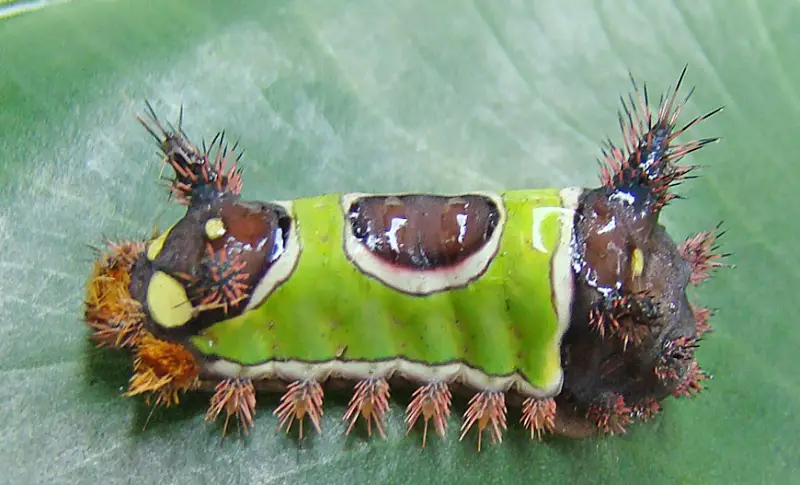
The Saddleback Caterpillar is one of the most easily recognized stinging caterpillars in Tennessee, known for its bright green body and distinctive brown “saddle” marking on its back. Despite its striking beauty, it packs a powerful sting delivered through venomous spines located around its body. This species belongs to the slug caterpillar family (Limacodidae), which is famous for its toxic defenses and colorful appearances.
In terms of size, the Saddleback Caterpillar grows up to about 1 inch long. Its body is a vivid green with a large brown spot in the center, bordered by a white outline — resembling a tiny saddle blanket. Both ends of the caterpillar have clusters of spiny horns covered in venomous bristles, giving it an intimidating look. The vivid color acts as a warning signal to predators that it’s not safe to touch.
The venom of the Saddleback Caterpillar causes a burning or stinging sensation upon contact, similar to a bee sting but often more prolonged. The spines inject toxins that lead to redness, swelling, and sometimes nausea or headaches. In sensitive individuals, the reaction can include blistering or systemic effects. The spines are designed to break off easily, embedding themselves into the skin, which makes them difficult to remove.
This species feeds on a broad range of host plants such as oak, elm, maple, cherry, and corn, making it a common garden pest. It prefers to rest on the underside of leaves, where its green body blends in perfectly with the foliage. Its natural habitats include deciduous forests, suburban gardens, and agricultural areas.
In Tennessee, Saddleback Caterpillars are most often encountered during the summer and early fall months. Gardeners and hikers should take care when handling plant leaves or branches, as these caterpillars are excellent at hiding and striking when disturbed.
Stinging Rose Caterpillar (Parasa indetermina)
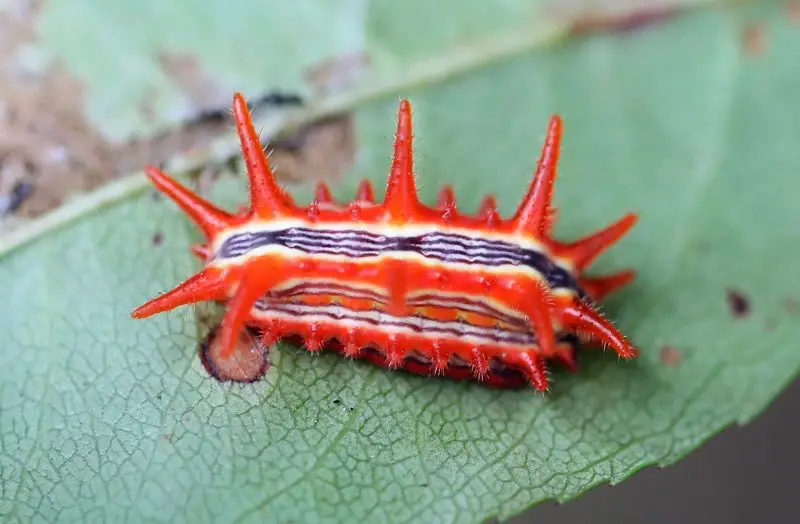
The Stinging Rose Caterpillar is another colorful but dangerous species found throughout Tennessee’s wooded regions and gardens. Named for its tendency to feed on rose bushes, this caterpillar stands out with its vivid coloration and venomous spines that can deliver a painful sting. It’s a member of the same family as the Saddleback Caterpillar, sharing similar defensive mechanisms.
Adult Stinging Rose Caterpillars measure around 1 inch in length. Their bodies are often bright yellow, orange, or red, decorated with purple stripes running down the sides. Along the back and edges, sharp branched spines protrude in rows — these are the venom-injecting structures that make contact painful. The bright coloration serves as an aposematic (warning) signal to potential predators.
When touched, the spines of this caterpillar easily penetrate human skin, releasing venom that causes an immediate burning or stinging sensation. The pain can last several hours, followed by localized swelling and irritation. The toxins can also trigger allergic reactions in sensitive individuals, leading to nausea or dizziness. Though not life-threatening, the experience is extremely uncomfortable.
The Stinging Rose Caterpillar primarily feeds on roses, apple trees, hickory, oak, dogwood, and redbud trees. It is most often seen from late spring through early autumn, particularly in gardens and woodland edges where its host plants thrive. The larvae spin small cocoons on leaves, transforming into attractive but harmless adult moths.
In Tennessee, encounters most often occur in flower gardens, parks, and orchards. Gardeners should be especially cautious when pruning roses or collecting leaves, as the caterpillar’s bright colors are not always immediately visible beneath foliage.
Io Moth Caterpillar (Automeris io)
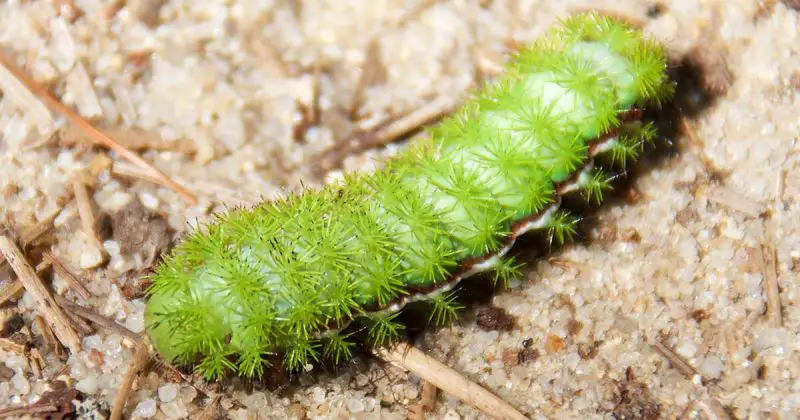
The Io Moth Caterpillar is a striking, bright green insect with sharp, branching spines that deliver venom upon contact. Common throughout the southeastern United States, it is frequently spotted in Tennessee’s fields, woodlands, and suburban gardens. Despite its beautiful appearance, this caterpillar is capable of inflicting a painful sting that can cause lingering irritation.
When fully grown, the Io Moth Caterpillar reaches lengths of 2 to 3 inches, making it one of the larger venomous caterpillars in the region. Its lime-green body is covered in tufts of green spines tipped with red or black. A distinct white and red stripe runs along each side of its body, adding to its vivid warning pattern. The adult Io Moth is equally impressive, featuring large eye-like spots on its hindwings used to startle predators.
Contact with the spines of the Io Moth Caterpillar causes sharp, burning pain followed by itching, redness, and welts. The venom contains compounds that irritate nerve endings and promote inflammation. While the sting is not usually dangerous, it can be quite severe for children or those with allergies. In rare cases, the reaction spreads, requiring medical attention.
This caterpillar’s diet includes willow, maple, birch, oak, and corn plants, making it adaptable to a variety of habitats. It is commonly found feeding on the outer leaves of trees and shrubs. Io Moths thrive in sunny areas, forest clearings, and agricultural zones.
In Tennessee, Io Moth Caterpillars are active from midsummer through early fall. They are often seen during August and September, clinging to leaves or stems. It’s best to admire them from a distance, as their stinging spines are efficient and easily triggered by light touch.
Buck Moth Caterpillar (Hemileuca maia)
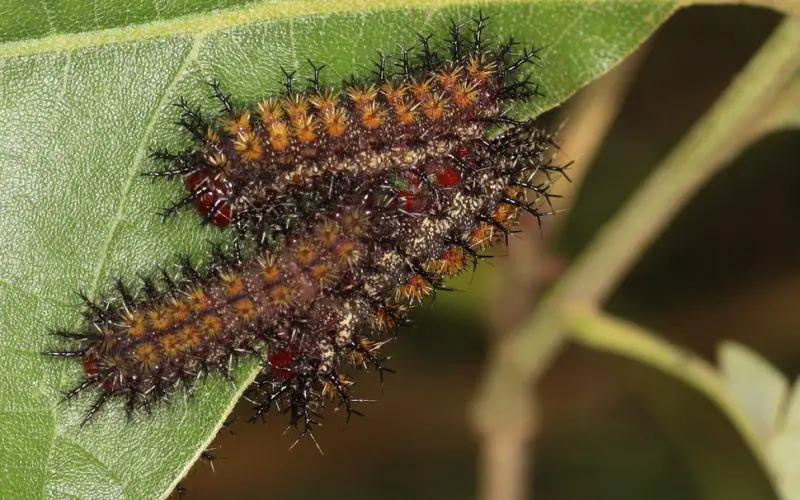
The Buck Moth Caterpillar is a large, dark-colored species known for its painful sting and dramatic appearance. Commonly found on oak trees throughout Tennessee, this caterpillar is one of the more aggressive stinging types in the region. Its name comes from the adult moth, which often emerges during deer season in the fall, coinciding with buck activity.
Adults of this species can reach up to 2.5 inches long. They are dark brown to black in color, with rows of white spots and clusters of sharp, branching spines running along the body. Each spine is connected to a venom gland that injects toxins upon contact. The caterpillar’s appearance, while intimidating, serves as a warning to predators like birds and small mammals.
The sting from a Buck Moth Caterpillar causes immediate pain, burning, and inflammation that may persist for several hours. The venom contains a mixture of proteins that irritate the skin and trigger histamine reactions. In severe cases, victims may develop red welts or blisters. Despite the discomfort, the effects are typically localized and non-lethal.
These caterpillars feed almost exclusively on oak leaves, particularly live oak and scrub oak species. They are commonly found in forests, parks, and residential neighborhoods with large oak trees. In their larval stage, they often move in small groups, feeding together until they are ready to pupate in the soil.
In Tennessee, Buck Moth Caterpillars are most visible from late spring through early summer. Because they tend to fall from trees onto sidewalks or porches, accidental stings are common. Wearing gloves and long sleeves when working near oaks is the best defense against these spiny insects.
American Dagger Caterpillar (Acronicta americana)
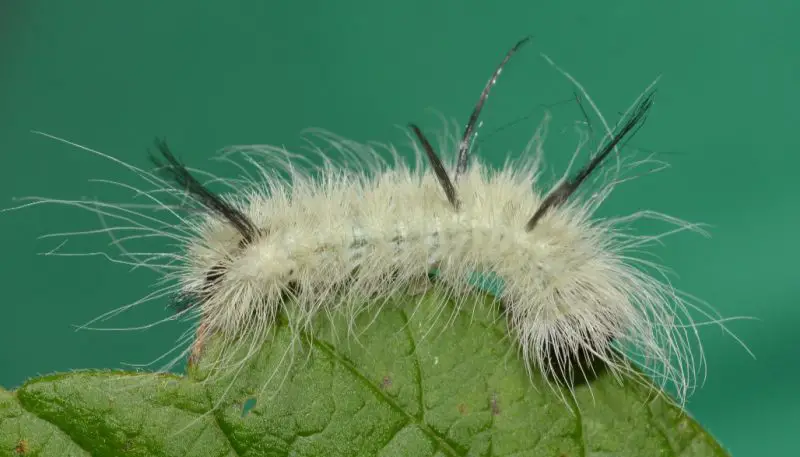
The American Dagger Caterpillar is a striking, fuzzy insect that often catches attention because of its soft, hair-like appearance. It is one of the more common stinging caterpillars found across Tennessee’s forests and suburban neighborhoods. Despite its delicate look, it can cause skin irritation and allergic reactions if handled carelessly. Adults develop into large gray moths with dark markings and dagger-shaped spots on their wings.
This caterpillar typically grows between 2 to 2.5 inches in length. Its body is covered in long, yellow or greenish hairs with several distinct black hair tufts near the head and rear. These tufts, while visually appealing, can break off and embed in the skin, releasing mild irritants that cause itching, redness, and swelling. The black bristles are the main cause of irritation, acting as a defense mechanism against predators.
Though not as venomous as other species like the Puss Caterpillar or Saddleback, the American Dagger’s hairs can still cause noticeable discomfort, particularly in sensitive individuals or children. The irritation typically subsides within a few hours to a day but may require antihistamine treatment if the rash spreads. The caterpillar does not inject venom but relies on mechanical irritation from its barbed hairs.
The American Dagger Caterpillar feeds primarily on hardwood trees such as birch, oak, elm, and maple. It prefers shady forests, parks, and residential areas where mature trees are abundant. During late summer and early autumn, it can often be found resting on tree trunks or the undersides of large leaves.
In Tennessee, encounters usually occur from July through October. These caterpillars are most active before pupation and may wander onto sidewalks or wooden structures. While they play an important ecological role as part of the food chain, they should never be handled with bare hands due to their defensive hairs.
Spiny Oak-Slug Caterpillar (Euclea delphinii)
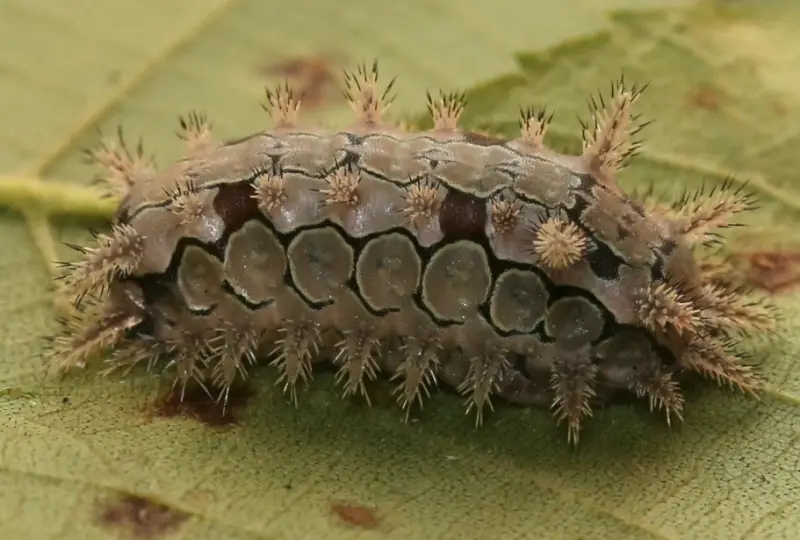
The Spiny Oak-Slug Caterpillar is a small but vividly colored species known for its stinging spines and bold patterns. Found throughout Tennessee, it is a member of the slug caterpillar family (Limacodidae) and is notorious for causing painful skin reactions when touched. Its compact size and bright appearance make it easy to spot — but also tempting to handle, which should be avoided.
Mature Spiny Oak-Slug Caterpillars are typically about 1 inch long. They have bright green bodies adorned with raised ridges and colorful spots in shades of orange, red, or yellow. Along their sides and back, they possess clusters of sharp spines that can inject venom upon contact. The caterpillar’s flattened, slug-like body helps it cling to leaves, making it difficult to dislodge when disturbed.
The venom of this species causes immediate burning pain, followed by redness and localized swelling. The reaction is generally mild but can last for several hours. For individuals with sensitive skin, the irritation may worsen or cause small blisters. The spines easily detach, and removing them with adhesive tape can help reduce symptoms. Despite its defensive nature, the caterpillar’s sting is not dangerous to most people.
The Spiny Oak-Slug feeds on a wide variety of deciduous trees such as oak, hickory, willow, and chestnut. It prefers sunny forest edges and suburban yards with plentiful foliage. Its vibrant coloration serves as a warning signal to birds and small mammals that it should be avoided.
In Tennessee, this species is most active during the late summer and early autumn months. Gardeners often find them feeding on the undersides of leaves. Because of their small size and camouflaging ability, they are frequently overlooked until someone brushes against them by accident.
White-Marked Tussock Moth Caterpillar (Orgyia leucostigma)
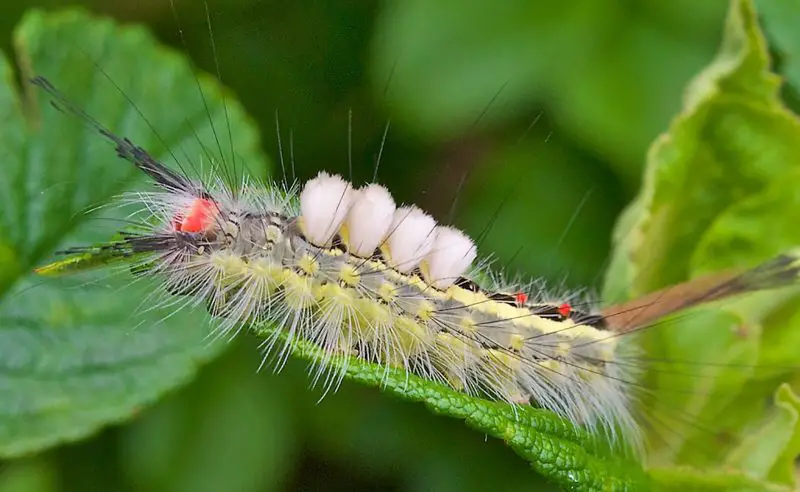
The White-Marked Tussock Moth Caterpillar is one of Tennessee’s most recognizable and widespread hairy caterpillars. Its bright colors, long tufts, and distinctive red head make it easy to identify. While not dangerously venomous, its hairs can cause skin irritation and mild allergic reactions. It is also a defoliator, capable of consuming large quantities of tree leaves in a short time.
This caterpillar grows to about 1.5 inches in length. Its body is usually yellow or cream-colored with four prominent white tufts (or “tussocks”) of hair on its back and two long black hair pencils extending from both ends. The red head capsule and bright side stripes add to its dramatic appearance. The adult moths are brownish-gray and much less conspicuous than their larvae.
Contact with the White-Marked Tussock Moth Caterpillar can lead to mild itching, redness, and small rashes. The irritation results from barbed hairs that easily lodge into the skin. Though it lacks true venom glands, the hairs can trigger histamine responses similar to an allergic reaction. Washing the affected area promptly usually prevents severe discomfort.
This species feeds on a wide range of trees, including oak, birch, willow, maple, and apple. It is highly adaptable and can be found in both urban and rural environments, especially where deciduous trees dominate. Its caterpillars are often seen crawling on fences, walls, or porches after consuming nearby foliage.
In Tennessee, these caterpillars are active from late summer through early fall. They are commonly spotted during September and October, especially after warm, humid days. Although their stings are not severe, it’s wise to avoid handling them, particularly for children who may be drawn to their unusual appearance.
Large Tolype Moth Caterpillar (Tolype velleda)
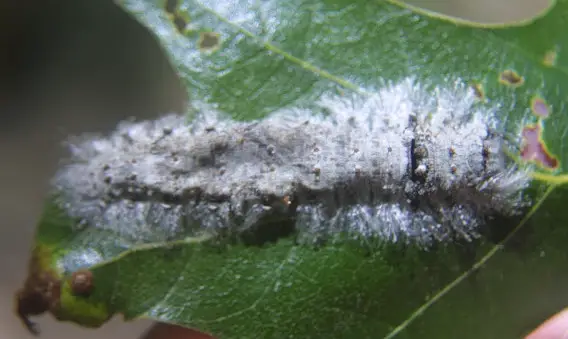
The Large Tolype Moth Caterpillar is a fuzzy gray species found throughout Tennessee’s forests and wooded suburbs. While not as dangerously venomous as some other caterpillars, it can cause skin irritation and mild allergic reactions when handled. The adult moths, known as “velvet moths,” have soft gray wings with delicate white lines and are active mainly at night.
Fully grown caterpillars reach about 1.5 inches long. Their bodies are densely covered in long, silky hairs that give them a woolly appearance. The coloration ranges from light gray to brown, sometimes with darker stripes or patches. Although it lacks venom-injecting spines, its hairs can cause irritation similar to fiberglass splinters when they come in contact with skin.
Reactions to contact with the Large Tolype Moth Caterpillar are usually mild, consisting of itching or localized redness. The hairs are non-toxic but barbed, meaning they can become embedded in the skin and cause discomfort. This species uses its fuzzy exterior primarily for camouflage and defense rather than for delivering venom.
The caterpillars feed on a range of deciduous trees such as cherry, apple, maple, oak, and birch. They prefer temperate forests, orchards, and backyard gardens. During daylight hours, they often rest on the undersides of leaves or cling tightly to tree bark to avoid predators.
In Tennessee, these caterpillars are seen from midsummer through early fall. They are nocturnal feeders, making them less visible during the day. While not dangerous, people who handle firewood, garden tools, or fallen leaves should still wear gloves to prevent irritation from stray hairs.
Imperial Moth Caterpillar (Eacles imperialis)
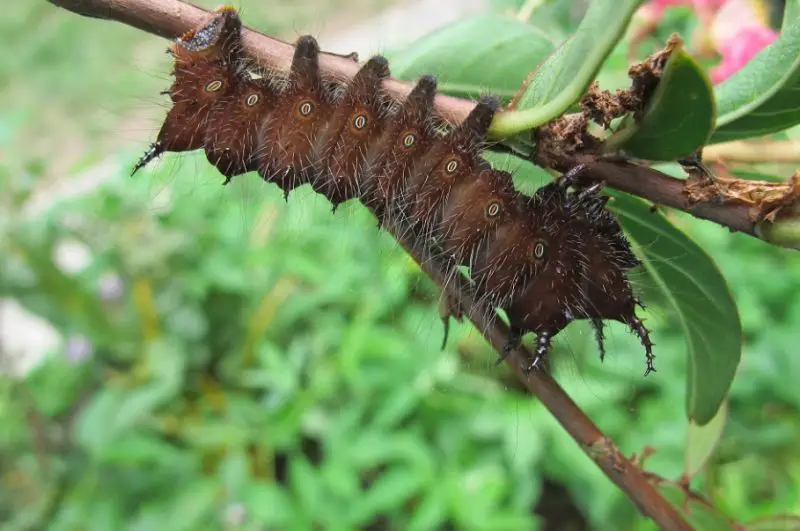
The Imperial Moth Caterpillar is one of the largest and most visually impressive caterpillars in Tennessee. Adults are equally majestic, sporting yellow and purple wings with striking patterns. While this species is not as venomous as others on the list, it can still cause mild skin irritation due to its spiny surface and rough bristles.
When mature, the Imperial Moth Caterpillar can reach lengths of 4 to 5 inches, making it one of North America’s biggest caterpillars. Its body color varies widely from green to reddish-brown, often with lighter stripes and rows of small spines. Early instars (younger stages) have more pronounced spines, while older larvae develop smoother, tougher skin. The overall texture and size make it look intimidating, even though its sting is relatively mild.
This caterpillar’s defensive spines can cause temporary itching or redness if handled. Although it does not possess venom glands, some individuals may experience irritation from the bristles. The species relies more on camouflage and size than toxicity for protection against predators.
Imperial Moth Caterpillars feed on a variety of trees including oak, maple, sweet gum, pine, and sassafras. They are usually found in forests, parklands, and large rural properties. Their feeding activity is concentrated in the late summer months when they prepare to burrow underground and pupate before emerging as moths the following year.
In Tennessee, sightings are most frequent from July through September. Due to their size and unique coloration, they are often found crawling on sidewalks or tree trunks during the evening. Though not a serious threat, they should still be left undisturbed — both for safety and to protect these magnificent insects during their brief larval stage.
Tips to Stay Safe
Brightly colored or hairy caterpillars in Tennessee are often a warning sign of venomous defense mechanisms. The safest way to avoid painful stings or allergic reactions is through awareness and prevention. Here are some essential safety guidelines for anyone who spends time outdoors, gardens frequently, or enjoys exploring wooded areas.
First, avoid touching any brightly colored or hairy caterpillar. Many of these species use their soft, fuzzy coats as camouflage for venomous spines underneath. Even a light brush against one can lead to painful irritation or swelling. Observing them from a distance is the safest way to appreciate their beauty without risk.
When working in gardens, parks, or forests, always use gloves when gardening or handling plants. This precaution protects you not only from caterpillar stings but also from hidden insects and thorns. Long-sleeved shirts and pants further reduce the risk of accidental skin contact.
It’s equally important to teach children not to pick up fuzzy caterpillars. Young children are naturally curious and may mistake these insects for harmless toys or pets. Educating them about the potential dangers helps prevent painful encounters and reinforces respect for wildlife.
If a sting does occur, act quickly but calmly. Gently remove spines with adhesive tape, avoiding rubbing the skin, which can spread the irritants further. Next, wash the affected area with soap and water, then apply a cold compress to reduce pain and inflammation. Over-the-counter antihistamines or hydrocortisone cream can also help ease itching and swelling.
FAQs About Dangerous Caterpillars in Tennessee
What is the most dangerous caterpillar in Tennessee?
The Puss Caterpillar (Megalopyge opercularis) is considered the most dangerous caterpillar in Tennessee. Its fluffy, fur-like appearance hides venomous spines that can cause severe pain, swelling, nausea, and even chest discomfort. Reactions vary depending on sensitivity and the number of spines that penetrate the skin.
What should I do if I touch a venomous caterpillar?
If you accidentally touch a venomous caterpillar, do not rub the affected area. Instead, use adhesive tape to gently lift out the spines, wash the skin thoroughly with soap and water, and apply a cold compress to reduce pain and swelling. If symptoms worsen—such as dizziness, difficulty breathing, or widespread rash—seek medical attention immediately.
Are all fuzzy caterpillars dangerous?
No, not all fuzzy caterpillars are venomous, but many brightly colored or hairy species use these traits as a warning to predators. It’s best to avoid touching any fuzzy caterpillar unless you are certain of its identity. Species like the Io Moth Caterpillar and Saddleback Caterpillar are known for their painful stings.
When are dangerous caterpillars most active in Tennessee?
Most venomous caterpillars in Tennessee are active during late summer and early fall, typically from August through October. During this time, they feed heavily before pupating into moths or butterflies. Gardeners and hikers should be extra cautious when working outdoors in these months.
Can caterpillar stings be life-threatening?
While most caterpillar stings cause localized pain, itching, or swelling, some people may experience severe allergic reactions that require immediate medical care. Individuals with known allergies to insect stings should take extra precautions and consider carrying antihistamines or an epinephrine auto-injector when exploring outdoors.
Where are venomous caterpillars commonly found in Tennessee?
Venomous caterpillars are often found in gardens, parks, forests, and residential landscapes. They may rest on the undersides of tree leaves, shrubs, or ornamental plants, such as oaks, elms, and roses. Always inspect plants carefully before pruning, weeding, or collecting leaves.
How can I identify a venomous caterpillar safely?
It’s safest to photograph the caterpillar from a distance rather than touching or moving it. You can then compare it to reputable online identification guides or contact local Tennessee wildlife or extension services for help. Avoid relying on touch or handling to identify species—visual recognition is always the safest approach.

